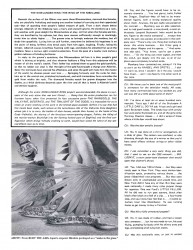Category ArchivePuppet Animation
Books &Puppet Animation 05 Sep 2007 07:33 am
The New Gulliver
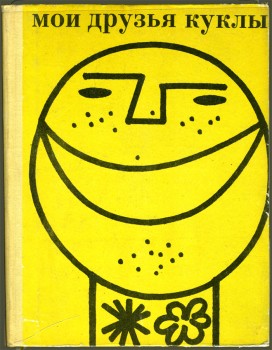 – We all know that Snow White was the first Hollywood animated feature. Many of us also know that Lotte Reiniger directed the very first animated feature in 1926, Prince Achmed. (This film is occasionally shown on TCM, though it’s not scheduled within the next 3 months.)
– We all know that Snow White was the first Hollywood animated feature. Many of us also know that Lotte Reiniger directed the very first animated feature in 1926, Prince Achmed. (This film is occasionally shown on TCM, though it’s not scheduled within the next 3 months.)
Some others of us may also know that Alexander Ptushko directed the first animated puppet feature, The New Gulliver in Russia.
This 68 min. film is discussed in that history of Russian puppet animation book, My Puppet Friends, which I described and featured last week. It’s a film which isn’t very well known in the West, although its title has been a part of my liturgy of animation history since I was a child. Only once in my memory, can I recollect a public screening in NY, and I wasn’t able to attend it. Presumably, with dvd it’s going to be available soon – if not already.
By all accounts, this must be a somewhat difficult film to sit through. Even this book, My Puppet Friends, tells how they chose to change the Jonathan Swift story since, obviously, no one could relate to his political critique of the capitalist 18th Century England under King George III.
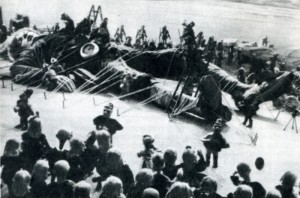 Per all commentaries I’ve read, the Russian film makers chose, instead, to make it a polemic espousing the Marxist beliefs of their day. Since this poiint seems to show up in every criticism of the film, one can only assume they wield a heavy hand in their interpretation.
Per all commentaries I’ve read, the Russian film makers chose, instead, to make it a polemic espousing the Marxist beliefs of their day. Since this poiint seems to show up in every criticism of the film, one can only assume they wield a heavy hand in their interpretation.
There is also, often, strong criticism of the puppetry in the film comparing it unfavorably to the work of Ladislas Starevich. That’s understandable given the amazing talents of that artist, who was working in France at the time of this film’s production, 1935.
The New Gulliver was actually a combination of live action and puppet animation. Peter, a young boy, falls asleep and awakens to find himself bound to the ground by all his dolls. Thus he is thrown into a variation of Swift’s story.
Here are the rest of the illustrations for The New Gulliver which are included in this 1971 book, My Puppet Friends.


If anyone knows how to get a copy of this film, I’d appreciate hearing about it.
Books &Puppet Animation &Trnka 29 May 2007 08:05 am
3D Puppet Book Corner
I’ve written about a lot of books on 2D animation, but I also love 3D puppet animation and have a small collection of books on the subject.
 – Bruce L. Holman’s book, Puppet Animation in the Cinema: History and Technique was originally published in 1975 and can only be located today in old book bins (meaning Amazon or ebay). It’s a real primer on the medium, and when it was published was the only one of its kind.
– Bruce L. Holman’s book, Puppet Animation in the Cinema: History and Technique was originally published in 1975 and can only be located today in old book bins (meaning Amazon or ebay). It’s a real primer on the medium, and when it was published was the only one of its kind.
The book does exactly what its title says, it gives a history of the form and tells how the films are made. There are photos of a lot of European puppetmakers and stills from their films. I think David Allen is the only important American who makes it into the book. But then, at the time, that’s pretty much what the landscape described. Loving Jiri Trnka, as I do, I was quite pleased to see quite a bit of space devoted to him, and, of course, that’s as it should have been at the time.
The book stood on its own for quite some time, and those of us who love puppet films loved this book.
_____________
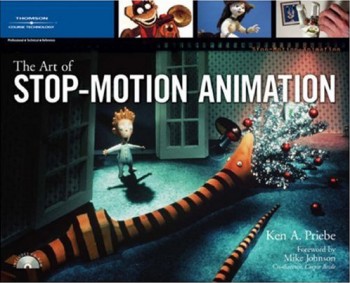 – Another book that you CAN get your hands on is Ken Priebe‘s The Art of Stop-Motion Animation. It brings things more current clearly explaining how puppet films are made, how to construct puppets of your own and how to make films of these puppets. There’s also a chapter on the history of the medium.
– Another book that you CAN get your hands on is Ken Priebe‘s The Art of Stop-Motion Animation. It brings things more current clearly explaining how puppet films are made, how to construct puppets of your own and how to make films of these puppets. There’s also a chapter on the history of the medium.
It’s a real nuts-and-bolts book that gives a clear demonstration of the process and a commendable how-to approach.
It’s obvious that Priebe loves puppetry and invests that love in the writing. This is a good book for anyone thinking of trying the medium and/or making a living of it.
_____________
 – Because the market for this medium is slim, there are a number of excellent books about the medium which exist to promote filmmakers. One such book is Cracking Animation by Peter Lord and Brian Sibley; it’s the story of Aardman and the making of their 3D animation. It’s amazing how many animation books Sibley has been connected to.
– Because the market for this medium is slim, there are a number of excellent books about the medium which exist to promote filmmakers. One such book is Cracking Animation by Peter Lord and Brian Sibley; it’s the story of Aardman and the making of their 3D animation. It’s amazing how many animation books Sibley has been connected to.
The book goes into nice depth in illustrating the history of 3D animation and moves from there to show how the Aardman puppet films are made. Nice illustrations show all of the phases with lots of stills of armatures, walk cycles, sets and animators. It’s a solid book with a lot of information. I believe later editions of the book have been updated to feature more recent films.
Of course, it’s Aardman-centric, but that’s not such a bad thing.
_____________
 – Another book that puts its focus on one individual is this Film Fantasy Scrapbook by Ray Harryhausen.
– Another book that puts its focus on one individual is this Film Fantasy Scrapbook by Ray Harryhausen.
Of course, Harryhausen is the “auteur” who created all those stop motion monsters and sci-fantasy films. (Anyone who has seen Jason and the Argonauts can only remember those incredible fighting skeletons.) This book is literally a scrapbook of stills and posters and illustrations showing off Harryhausen’s career up to 1972, when the book was published.
It’s all in B&W and one wishes there were more back stage imagery as you see in the Aardman book. It’s really more of a “fanzine” type book, but if you’re at all a Harryhausen fan, you’d love owning the book.
Harryhausen has written a number of other books about his film work. I don’t own any, but The Art of Ray Harryhausen looks like it might be good. Unfortunately I was never a wildly enthusiastic fan of this type of special effects animation, so I haven’t gone wild over his books. The only reason I include this book here is that you can’t mention 3D animation without referencing Harryhausen.
_____________
- Finally, let me showcase the book The Corpse Bride: An Invitation to the Wedding by  Mark Salisbury.
Mark Salisbury.
This is an out-and-out promotional book for the film. However, it really gives a state-of-the-art demo to show how studio puppet films are made. The book includes lots of backstage photos which go into detail about how certain scenes were created. This is a variant on the excellent book done to promote The Nightmare Before Christmas.
We’re shown how some scenes combined 3D puppets with 3D cgi (a technique all puppet animation films include these days.) The details of the odd digital photography are explained fully and illustrated in detail.
Considering the obvious devotion Tim Burton seems to have for 3D puppet animation, it’s worth watching closely. Having made Vincent, Nightmare Before Christmas, The Corpse Bride and, now in production, 9 Burton has become one of the most important advocates of the medium.
Commentary &Puppet Animation 05 May 2007 08:06 am
More Marionettes
 - Jim Henson actually changed puppetry and the perception of puppets with personality, imagination and great craftsmanship. His hand/rod puppets were so believable that almost any other form of puppet was rejected. When he first started appearing regularly on ABC’s Jimmy Dean Show, where Rowlf the Dog became an overnight sensation, puppetry took a giant step. Once his puppets were filmed and were just as successful on the big screen as they’d been on TV, they became something bigger than puppets. Since they were originally planned for television the move to film was relatively easy, and the Muppets took the world. No wonder the show was an immediate success.
- Jim Henson actually changed puppetry and the perception of puppets with personality, imagination and great craftsmanship. His hand/rod puppets were so believable that almost any other form of puppet was rejected. When he first started appearing regularly on ABC’s Jimmy Dean Show, where Rowlf the Dog became an overnight sensation, puppetry took a giant step. Once his puppets were filmed and were just as successful on the big screen as they’d been on TV, they became something bigger than puppets. Since they were originally planned for television the move to film was relatively easy, and the Muppets took the world. No wonder the show was an immediate success.
 This was bad news for marionettes.
This was bad news for marionettes.
Once Bil & Cora Baird had ruled the theatrical environs on TV (Bil & Cora Baird Show and Peter & the Wolf) , in theater (Flahooley, Baker Street) and on film (Sound of Music). Yet when the very successful scene in the film, Lili, where Leslie Caron talks to Bil Baird’s marionette, moved to Broadway as the musical, Carnival, it was Jim Henson who built the puppets for the show.
A sea change had happened. The marionette had become a hand puppet.
Here’s a bit of the Bil & Cora Baird tv show:
It’s interesting that both Henson and the Bairds dabbled with stop motion animation. this is a Sesame Street piece from Henson:
Perhaps it took too long, or maybe the element of live theater was lost, but neither went beyond small attempts in the form. Stop motion wasn’t for them.
Bil & Cora Baird opened their puppet theater on 50 Barrow Street in Greenwich Village and it lived to the end of their lives. But the fame that they knew was eclipsed by the Henson success. Times change and marionettes – puppets on strings – seemed to become little more than a joke. (See Team America. The duo that attacked animation went after puppet films like Thunderbirds Are Go and Stingray.)
Now it appears that puppets on film are getting eclipsed by computer animation. When all cgi filmmakers are using their medium to create little doll-like characters straight out of Viewmaster, can a hand/rod puppet succeed? When Yoda goes from a Henson puppet to a cgi puppet, is the handwriting on the wall?
Perhaps only live theater will keep the brilliance of live puppets (including marionettes) alive. The performance of a marionette Macbeth, that I saw recently, played to a full house. Most of the audience, it seemed to me, were adults.
Time to get back to the marionette theater that has existed in Central Park for so long.
Puppet Animation &Theater 28 Apr 2007 10:00 am
Out Damn Spot
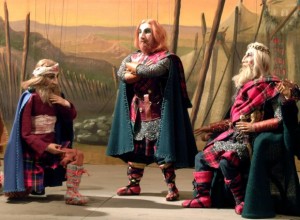 – Last night I saw a program at the New Victory theater on the revamped 42nd Street. (This theater was built in 1900 by Oscar Hammer-stein I and is the oldest theater on the block. It predates the Ziegfeld Follies!)
– Last night I saw a program at the New Victory theater on the revamped 42nd Street. (This theater was built in 1900 by Oscar Hammer-stein I and is the oldest theater on the block. It predates the Ziegfeld Follies!)
The program was Macbeth, as performed by marionettes. The Compagnia Marionettistica Carlo Colla e Figli is the world’s oldest puppet troupe. It was established in the late 18th century in Milan and has been in operation ever since.
Anyone who his visited my studio or home has a good idea that I might be a marionette fan. They’re tucked into many a corner of my spaces. When I was a child I made them out of muslin and made clothes for them as well (and consequently learned how to sew). I bought them at expensive toy stores (I treasured the Lady and the Tramp puppets that I had.)
I built a puppet theater and charged admission to the kids of the neighborhood to come see 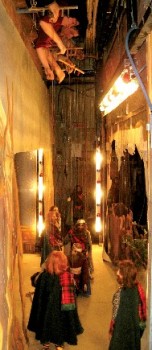 the shows. (The candy counter made all the money.) With the cash, I bought more puppets and put on more shows.
the shows. (The candy counter made all the money.) With the cash, I bought more puppets and put on more shows.
I was intrigued with the very popular Bil and Cora Baird (maybe sometime I’ll tell you about my interview with Bil Baird for a job in his company), and the show I saw in their Barrow Street theater – Jack & the Beanstalk – was the last marionette program I saw prior to last night’s Macbeth.
Marionettes have specific problems – mechanical ones.
Strings have to be hidden, unless you’re some kind of avant garde puppeteer who wants to call attention to them. The longer the strings, the greater the problems.
Gravity is another problem. Puppets often seem to be weightless, and to some degree, they are. They’re held aloft by the overhead puppeteer manipulating them. Hence, walks often look comical. It’s easier for them to glide along rather than imitate a walk.
Puppet animation has a great advantage since they’re moved ahead and manipulated frame by frame. They can be made to do anything a human can, if the animator is good enough.
The program last night had an enormous set filling a stage. There was always a foreground area – a beautiful wooded setting, painted to look like a Romantic watercolor of the 18th century or a castle made of bricks – which left an opening of about 10 ft wide by 8 ft high. (This is purely speculation from the 8th row.) Above the opening, of course, are the puppeteers. About ten of them work above the stage; they took a bow at the end to reveal themselves.
 There were six actors who sat in the orchestra pit with their backs to us. Their performances, I thought, were a bit uneven. Macbeth, himself, was brilliant until it came time for him to say some of the character’s great lines. They were also miked, and the sound didn’t come from the stage but from speakers. The puppeteers, however, were so expert that I didn’t have any confusion in knowing which puppet was speaking.
There were six actors who sat in the orchestra pit with their backs to us. Their performances, I thought, were a bit uneven. Macbeth, himself, was brilliant until it came time for him to say some of the character’s great lines. They were also miked, and the sound didn’t come from the stage but from speakers. The puppeteers, however, were so expert that I didn’t have any confusion in knowing which puppet was speaking.
Within the framing device were many beautiful sets in which the puppets would work. All of the settings were elaborate and theatrical, all of them complex. Large scenes employed upwards of twenty marionettes moving about. In one opening scene, four men talked in the foreground while endless groups of characters walked behind them – several on horseback.
 Yes, there were infrequent laughs at how the characters walked (especially the horses), but the manipulation had to have been the best I’ve seen, and for the most part you bought it. Team America captured quite a bit of the funny part of marionettes, but Macbeth captured some of the greatness of them.
Yes, there were infrequent laughs at how the characters walked (especially the horses), but the manipulation had to have been the best I’ve seen, and for the most part you bought it. Team America captured quite a bit of the funny part of marionettes, but Macbeth captured some of the greatness of them.
I would have liked the show to have been a bit more theatrical – the lights, the sets, the puppet performances were all magnificent, but the writing could have incorporated less of the talk and more of the violence of the story. The company seemed to be trying to show the subtleties they could perform with the marionettes, and they succeeded. I wish they balanced the climaxes in the show a little more carefully when they set about abbreviating Shakespeare’s tragedy.
Sorry, I have a hundred more things to say about the subject, so I allowed myself to ramble here. I will come back to it, and be a little more organized in my writing. But the show was sterling and shouldn’t be missed. It plays through this weekend at the New Victory Theater.
Puppet Animation &Trnka 18 Jun 2006 08:31 am
The Hand
As you can tell, from some of my recent postings, I have always had a love affair with puppet animation. There’s something extraordinary about that medium that has drawn me in. I’ve always demanded a tactile approach to animation, including all of the 2D work I’ve done.
 I remember seeing Lady & The Tramp in 1955, on its first release (I was nine.) It was then that I consciously noted that one of the backgrounds in the “Bella Notte” sequence (I can now see that it was an Eyvind Earle BG) had texture in its paper. The board it was painted on came through the animation photography and reached out to me. The human hand became evident in the film.
I remember seeing Lady & The Tramp in 1955, on its first release (I was nine.) It was then that I consciously noted that one of the backgrounds in the “Bella Notte” sequence (I can now see that it was an Eyvind Earle BG) had texture in its paper. The board it was painted on came through the animation photography and reached out to me. The human hand became evident in the film.
Perhaps, this was what I loved so much about animation in the first place. Humans did it, and it was self-evident. Being reminded of it, in the subtlest ways – usually unintentional, added to my joy.
Perhaps this is what brought me to John Hubley’s films. Those films were so obviously painted: characters and BG were both used by the photographer to combine for us, and the unintentional was often caught on screen. (I immediately loved those highlighted rings double-exposed around the characters in Moonbird, the brush strokes of The Hole, the transparency of the characters’ paper in Of Stars and Men.) It added to the experience.
In a sense, I was brought out of the film but held in it and given the opportunity to love it even more.
 I’ve had this same sense with the best 3D animation. Though I was always there viewing it, I was also caught up in the emotions of the film. Trnka’s masterful film, The Hand, had my understanding those tears and sweat on the little potter were moistened ink that had been his painted eyes. But the anguish I felt the first time I saw the film and that effect has never left me. The perfections of the Human Hand in that film forced the imperfections of the puppet potter to be revealed until it destroyed him.
I’ve had this same sense with the best 3D animation. Though I was always there viewing it, I was also caught up in the emotions of the film. Trnka’s masterful film, The Hand, had my understanding those tears and sweat on the little potter were moistened ink that had been his painted eyes. But the anguish I felt the first time I saw the film and that effect has never left me. The perfections of the Human Hand in that film forced the imperfections of the puppet potter to be revealed until it destroyed him.
Perhaps this is also what keeps me from embracing cgi animation. Despite the faked textures of the computer, it’s so obvious that it is not real. At least not when the characters are cartoons.
A very small example of what I’m trying to communicate stands out for me in Cars. The paint job of newer cars has a flecking/speckling of glitter within the paint. In the right light, the main character, Lightning McQueen, had this paint job. Everytime I saw it, I was distracted and pulled out of the film. Like the real paint on a real car, that flecking was embedded within the paint, itself. It didn’t feel like the byproduct of a human hand; it felt like a computer trick.
 I am no more capable of coloring the computer skin of that computer hand than I am of painting a real car. It isn’t tactile for me, it’s just distracting.
I am no more capable of coloring the computer skin of that computer hand than I am of painting a real car. It isn’t tactile for me, it’s just distracting.
It’s just something I never feel I can reach out and touch. This is something that has been overcome, for me, in a couple of films. The Incredibles gets very close often. Moments of Robots, such excellent design for the medium. Some of Toy Story.
(Click on any image to enlarge and enjoy the textures.)
Of course, I recognize that this is my problem. However, I recognize it’s a problem that other people probably have and wonder if there isn’t a solution. In The Iron Giant, the Giant is animated by a computer. I was told that the animation had to be rigged to be animated on “two’s” so that it wouldn’t separate from the rest of the hand-drawn animation. Oddly, it felt totally acceptable to me; I saw no problem and accepted that robot. There has to be, in there, a way to resolve it – I’m just thinking here and don’t expect anyone to try to follow what I’m saying. Perhaps if “human” problems, technical problems, were added to the animation. . . No this is even too stupid for me.
Puppet Animation 17 Jun 2006 07:46 am
Lou Bunin
In my collection, I have this article from an out-of-print Close-up Magazine, and I thought I’d post it for the 3D lovers out there.

– Back in the days when I was scouting New York for any possible job in the animation industry, my love of puppet animation came to the rescue.
Through ASIFA East I’d met John Gati and had talked with him through many trips on the subway (we both lived in Queens at the time), about 3D animation. John made his living with model animation for commercials, though his love was full-out puppets. At a dry time for me, he offered 2-3 days work helping him on a commercial spot for Care*Free Sugarless gum.
The Care*Free gum had to undress itself (take off the wrapper) and jump on a scale. Trident gum, did the same on the other end of the scale. Which weighed more? Care*Free, of course.
(Click on any image to enlarge and read.)
I prepared the packaged gum, wired it up for 3D movement and helped in the shoot. Just as we were completing the spot, word came down that Trident was changing its package. We had to do the spot again. Another two days of work for me.
Midweek, another spot started on the other side of the studio (a large open room with a lot of cameras, movieolas and equipment. Lou Bunin had just started animating a Lucky Charms commercial with a puppet elf. This was a test commercial General Mills wanted to view to see how the character worked in 3D. (Obviously, they didn’t do the change.)
For a couple of days, I got to watch and talk with Lou seeing how real characters were animated. It was memorable for me, a neophyte in love with all things animated.
Lou Bunin had done a memorable feature of Alice In Wonderland which was released at the same time as Disney’s film. This puppet film, is probably closer in feel to what Lewis Carroll was thinking when he wrote Alice, and the film should be seen for comparison.

.
Years later, after I’d formed my own animation company, I found my first short film to produce for a company called Learning Corporation of America. This was a non-theatrical division of Columbia Pictures. For LCA I did two short films, Byron Blackbear and the Scientific Method and Why We Need Doctors.
Assigned to me as my assistant Producer for LCA was a woman named Amy Bunin.
In a quiet moment alone, I asked if she were related. It turned out that Amy was Lou’s daughter, and I knew that some sort of karma was at work.
#7
Animation Artifacts &Puppet Animation 06 Jun 2006 07:07 am
Hansel & Gretel
- Hansel and Gretel was an animated feature produced in 1954 by Michael Myerberg a showman of a producer who made elaborate claims for his sets and puppets and pushed the publicity to feature many innovations that didn’t exist. 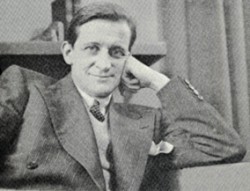
I can remember CBS covering the film’s premiere. They had the upper half of the puppet of Rosina Rubylips in a glass box – it looked not unlike the gypsy fortuneteller in the movie BIG. Supposedly the puppets were controlled by electronics. Singer Anna Russell, at the premiere, was prompted to turn dials, and the puppet moved in a robotic movement. The film employed animation. There were no electronics operating the puppets; there were wires.
(producer Michael Myerberg)
As a child, I was intrigued with this puppet feature – a rarity in those days – and searched for any information about the production. A magazine I have, Closeup #2 (1976) offered a lot of photos of this film, and I thought I’d post some of them.
The feature was done out of a brownstone on East 2nd Street in Greenwich Village, and  non-animators were hired to animate the puppets. Some of them were master puppeteers (e.g. Don Sahlin had already designed and built all the marionettes on Howdy Doody, Kermit Love went on to do some masterful work with Jim Hensen.) The camerman was the extra- ordinary still-photographer, Martin Munkasci.
non-animators were hired to animate the puppets. Some of them were master puppeteers (e.g. Don Sahlin had already designed and built all the marionettes on Howdy Doody, Kermit Love went on to do some masterful work with Jim Hensen.) The camerman was the extra- ordinary still-photographer, Martin Munkasci.
Of course, all of these people had to learn how to do animation on-the-job.
Don Sahlin and Joe Horstman animating Hansel & Gretel in the woods.
This photo gives a good indication of the scale of the production.


Hansel and Gretel dance inside their cottage waiting for their parents to return.
Aside from it being a first feature for Myerberg, it was also the first time opera was the basis for an animated film. All of the dialogue is sung in an English translation of the Humperdink opera. They utilized some great opera stars such as Anna Russell for the voices. That, in itself, gives the animated feature a peculiar feel.

The puppet & production sketch of the evil witch, Rosina Rubylips. The character is voiced by opera star, Anna Russell.

Scenic Designer, Evalds Dajevskis in front of one of his many sets.
Animating the descent of the angels from their fairy kingdom. Pictured are (counterclockwise): Danny Diamond, Kermit Love, Joe Horstman, Sky Highchief, Teddy Shepard and, outside of the circle (with arms crossed) Roger Caras.
It looks to be a relatively large group of animators gathered in and around the very detailed, gingerbread set.
You can see how large the sets and puppets are in this photograph. The animators used electromagnets in the feet of the puppets to keep them anchored to the table. By turning off the switches they were able to move the puppets from the spot where they stood.
The elaborate puppets were created by Jim Summers. He designed armatures for the puppets which had a number of little switches. By pressing on the switch for the leg, for example, you would release the leg and could then move it. By releasing the pressure on the switch, the leg would lock in position.
The director of the film, John Paul, was a British actor directing his first and last animated film.
Puppet Animation 11 Feb 2006 08:53 am
Corpse Bride
 - Last night I was invited to a screening of The Corpse Bride and a gallery opening, adjacent to the theater. The gallery featured a choice collection of puppets, storyboards and production art for the film. Tim Burton was in attendance, and producer, Allison Abbate, and animation supervisor, Anthony Scott, were also there to answer questions. It was a delightfully small gathering, so there was ample opportunity to meet the three and take in the remarkable artwork.
- Last night I was invited to a screening of The Corpse Bride and a gallery opening, adjacent to the theater. The gallery featured a choice collection of puppets, storyboards and production art for the film. Tim Burton was in attendance, and producer, Allison Abbate, and animation supervisor, Anthony Scott, were also there to answer questions. It was a delightfully small gathering, so there was ample opportunity to meet the three and take in the remarkable artwork.
I was particularly caught by the set illustrations of Luc Desmarchelier. They had a particular style, all his own. The other designs by huy Vu and Simon Varela also were brilliant.
(An illustration by Tim Burton – click to enlarge. )
The puppets were larger than I’d thought which made me realize how large their master sets had to have been. Those on display were about 18″ tall. The delicate armatures were part of the feature of the skeleton puppets with intricate little screws holding their joints together. The coach with horse that carries Victor and his parents in the film’s opening was also on display.
They gave opening night guests a copy of the DVD, which seems to feature quite a few extras, and a copy of the book, handsomely illustrated with many paintings. I’m sorry that a number of the set drawings aren’t pictured in the book. But beggars can’t be choosers.
The film is extremely attractive, and its production design should have been rewarded with. at least, a nomination by the Motion Picture Academy. However, we now have this new category, Best Animated Feature, which relegates all animation into the proper box, and we’ll see how long it takes to get a nomination outside of that pigeonhole. Things haven’t changed much since 1941 when Walt Disney quit the MPAA for not nominating Fantasia. He felt he had been slighted and that animation would alwas be relegated as an afterthought.

(A storyboard panel by Chris Butler – reminiscent of Ub Iwerks.)
The gallery will feature these puppets and models and drawings until February 20. If you’re in New York during this period, I urge you to visit. It’s at the Tribeca Cinemas Gallery at 13 Laight Street (at Canal Street) adjacent to the Tribeca Cinemas. Noon-8pm daily.
Animation &Books &Puppet Animation &Trnka 27 Jan 2006 08:22 am
Buyout
Rambling News:
 – The Pixar buyout by Disney has all the message boards soaring and the blogs guessing. I’ve already put my two cents worth of thought into the pot and find that there’s nothing much more to say about it. However, it has made for some entertaining reading; let’s hope it’ll make for entertaining films.
– The Pixar buyout by Disney has all the message boards soaring and the blogs guessing. I’ve already put my two cents worth of thought into the pot and find that there’s nothing much more to say about it. However, it has made for some entertaining reading; let’s hope it’ll make for entertaining films.
- I found a great site well worth visiting linked to the Sundance website: Daniel Sousa’s Fable. This site offers a couple of clips and links to Daniel’s primary site. It features a lot of beautiful artwork worth a trip.
I’d like to see the whole film.
.
I illustrate this page with a couple of puppet designs by Jiri Trnka for his film, A Midsummer’s Night Dream.
– The Jacob Burns Film Center Presents 
Early Silent Animation
February 5th, Sunday 3pm
All the films will be accompanied by music composed
and performed on the piano by Ben Model.
The Burns Film Center will show five rare silent animated shorts as well as a very special treat – film historian Steve Massa’s reenactment of the live stage show that accompanied Winsor McKay’s groundbreaking film,
Gertie the Dinosaur (1909).
A Q&A with host, Steve Massa, and pianist, Ben Model , will follow the screening.
Jacob Burns Film Center
364 Manville Road
Pleasantville, NY
914.747.5555
 - Speaking of Gertie, John Canemaker‘s revised book is a gem: Winsor McKay, His Life And Art. Like all the other books he has written this one is gloriously illustrated and adds an enormous contribution to animation history. This book is a rarity, and every animator should own a copy. We have to stay linked to our roots.
- Speaking of Gertie, John Canemaker‘s revised book is a gem: Winsor McKay, His Life And Art. Like all the other books he has written this one is gloriously illustrated and adds an enormous contribution to animation history. This book is a rarity, and every animator should own a copy. We have to stay linked to our roots.
McKay fans should also know (and probably do) about the book: Daydreams & Nightmares This is a collection McKay’s political and editorial cartoons.
You can also find a nice collection of Little Nemo strips in Little Nemo in Slumberland – So Many Splendid Sundays. Of course, Little Nemo was McKay’s first comic strip; this book reprints the Sunday color strips in a large format.
Daily post &Puppet Animation &Trnka 22 Jan 2006 08:32 am
Rambling & Trnka
More rambling:
 The illustration to the left is by Jiri Trnka.
The illustration to the left is by Jiri Trnka.
- Speaking of Dumbo, this is by far my favorite of the Disney dvd releases. Aside from the fact that it’s probably my favorite of the Disney features, John Canemaker does a solo addition of a commentary through the entire film.
It reminds me a bit of the pieces the NY Times used to do. They would have a celebrity watch an older film of their choice, and the writer and star would talk through the film. We’d get to read what the writer quoted from the viewing. Here we actually are watching the film with Canemaker and get to enjoy all his knowledge of this film at the same time. It’s informative, casual and enjoyable.
Would that the Disney studio would do more of the same. Oh, wait. No. They don’t give us commentary tracks anymore, at least not on their “Treasure” series, but they do add more games and puzzles for the children.
- I’m still traveling through the most recent WB collection – vol. III. I like about half of the films on this collection. My preference is for the earlier films. I wouldn’t mind seeing some of the m a n y black and white shorts that were made. All those great Porky films – as long as they don’t force the colorized ones on us – with costar Gabby. I love them and would certainly buy up any dvd’s.
I’ve gone through all of the commentary tracks and have enjoyed some of them. The Michael Barrier commentaries are a treasure of information; it’s almost like he can’t get it all in (and I’m sure he can’t) before the film ends. His audio highlights from some past interviews, add an original touch to the experience. Likewise Milt Gray. His is a new voice that I’d like to hear more from: lots to say and articulates it well. I’ve also gotten to enjoy the amiable style of Greg Ford‘s comments. He gives us a hell of a lot of information while at the same time absolutely loving every second of every short he views with us.




The stills above come from the Jiri Trnka film, The Archangel Gabriel and Ms Goose. It’s a remarkably beautiful film in which puppets play out a story from Boccaccio’s Decameron. The film takes place in Venice (are there any other animated films set in Venice?)
- Cartoon Brew Amid Amidi has a scathing and absolutely astute response to Cory Edwards’ whining on Animation Nation that his film, Hoodwinked, has been disrespected by animators. I wonder when Edwards or his brother, Todd Edwards, will complain about the treatment the critics have given his film. Go Amid, go.




